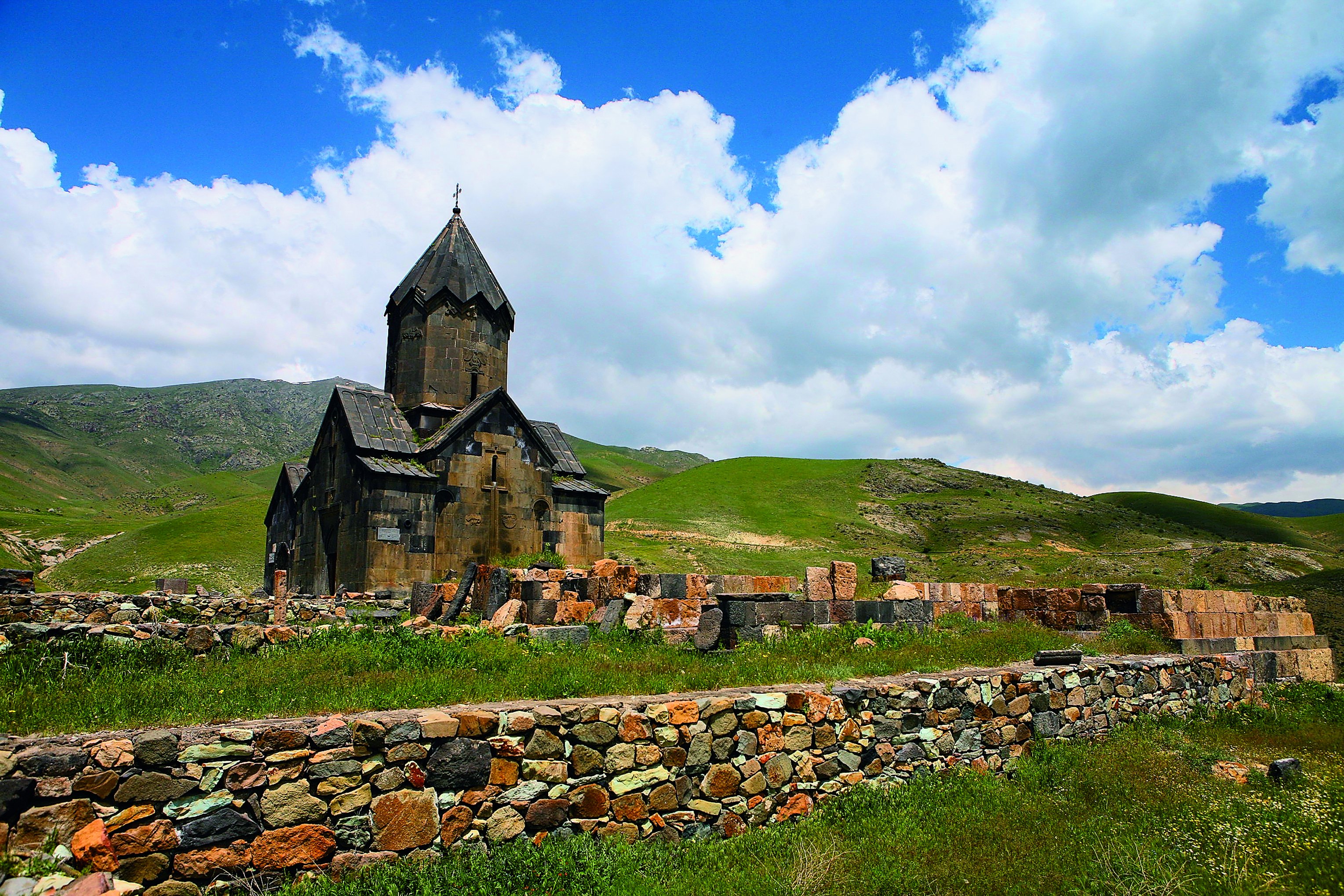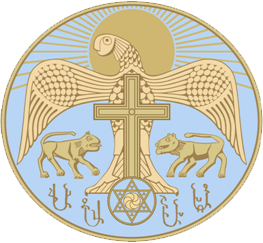|
Awag Zak‘arian
Avag Zakarian ( ka, ავაგ მხარგრძელი, tr; ) (died 1250 AD) was an Armenian noble of the Zakarid line, and a Court official of the Kingdom of Georgia, as ''atabeg'' and ''amirspasalar'' of Georgia from 1227 to 1250. The eastern areas Bjni, Gegharkunik, Vayots-dzor, Artsakh, Siunik, Nakhichevan, Dvin and Yerevan were under the jurisdiction of the atabeg Ivane Mkhargrdzeli and his son Avag. First Dvin and later Bjni were centres of this division. The subjects of Ivane's family were the Orbelians, Khaghbakians, Dopians, Hasan-Jalalyan and others. His sister, Tamta, through forced marriages to members of the Saladin and Khwarazmian dynasties, and capture by the Mongol empire, served as governor, regent, or ruler of Akhlat at points throughout the early 13th century. Biography During Mongol invasion of Georgia in 1238-39 Queen Rusudan had to evacuate Tbilisi for Kutaisi, leaving eastern Georgia in the hands of atabeg Avag Mkhargrdzeli and Kak ... [...More Info...] [...Related Items...] OR: [Wikipedia] [Google] [Baidu] |
Amirspasalar
''Amirspasalar'' or ''amirspasalari'' ( ka, ამირსპასალარი, from , ) was the commander-in-chief of the medieval Georgian army and one of the highest officials of the Kingdom of Georgia, commonly rendered as "Lord High Constable" (and sometimes also as ''generalissimo'') in English. It is composed of ''amir'', an Arabic term meaning 'commander', 'governor', or 'prince'; and '' sipahsalar'', from the Persian for 'army commander'.Robert Bedrosian, "Amirspasalar", in: Joseph Reese Strayer (1983), ''Dictionary of the Middle Ages'', p. 235. Scribner, . The ''amirspasalar'' was a wartime supreme commander-in-chief of the royal armies, and the bearer of the state flag. Under Queen Tamar (r. 1184–1213), it was the third great office of the Georgian state, after King and '' atabek''. '' The Institution of the Royal Court'', most probably codified during the second reign of George V (1314–1346) defines the office as "an honorary vizier and the head of army". ... [...More Info...] [...Related Items...] OR: [Wikipedia] [Google] [Baidu] |
Vayots Dzor Province
Vayots Dzor (, ) is a province (''marz'') of Armenia. It lies at the southeastern end of the country, bordering the Nakhchivan exclave of Azerbaijan to the west and the Kalbajar District of Azerbaijan to the east. It covers an area of . With a population of only 52,324 (2011 census), it is the most sparsely populated province in the country. The capital and largest city of the province is the town of Yeghegnadzor. A major wine-producing region in Armenia, Vayots Dzor is home to many ancient landmarks and historical attractions. Among them are the Areni-1 cave complex and Areni-1 winery of the Chalcolithic period, the 8th-century Tanahat Monastery, the 10th-century fortress of Smbataberd, and the 13th-century monastery of Noravank. The province is also home to the spa-town of Jermuk and the village of Gladzor, known for the 13th and 14th-century University of Gladzor. Etymology The province is named after the Vayots Dzor canton of historic Syunik, the ninth province of ... [...More Info...] [...Related Items...] OR: [Wikipedia] [Google] [Baidu] |
Mongols
Mongols are an East Asian ethnic group native to Mongolia, China ( Inner Mongolia and other 11 autonomous territories), as well as the republics of Buryatia and Kalmykia in Russia. The Mongols are the principal member of the large family of Mongolic peoples. The Oirats and the Buryats are classified either as distinct ethno-linguistic groups or as subgroups of Mongols. The Mongols are bound together by a common heritage and ethnic identity, descending from the Proto-Mongols. Their indigenous dialects are collectively known as the Mongolian language. The contiguous geographical area in which the Mongols primarily live is referred to as the Mongol heartland, especially in discussions of the Mongols' history under the Mongol Empire. Definition Broadly defined, the term includes the Mongols proper (also known as the Khalkha Mongols), Buryats, Oirats, the Kalmyks and the Southern Mongols. The latter comprises the Abaga Mongols, Abaganar, Aohans, Arkhorchin, Asud, ... [...More Info...] [...Related Items...] OR: [Wikipedia] [Google] [Baidu] |
Khwarazmian Dynasty
The Anushtegin dynasty or Anushteginids (English: , ), also known as the Khwarazmian dynasty () was a Sunni Islam, Sunni Muslim dynasty of Turkic peoples, Turkic ''mamluk'' origin from the Begdili, Bekdili clan of the Oghuz Turks. The Anushteginid dynasty ruled the Khwarazmian Empire, consisting in large parts of present-day Central Asia, Afghanistan and Iran in the approximate period of 1077 to 1231, first as vassals of the Seljuks and the Qara Khitai (Western Liao), and later as independent rulers, up until the Mongol conquest of the Khwarazmian Empire in the 13th century. The dynasty was founded by commander Anushtegin Gharchai, a former Turkic peoples, Turkic slave of the Seljuq sultans, who was appointed as governor of Khwarazm. His son, Muhammad I of Khwarazm, Qutb ad-Din Muhammad I, became the first hereditary Shah of Khwarazm.Encyclopædia Britannica, "Khwarezm-Shah-Dynasty",LINK Anushtegin Gharchai, Anush Tigin may have belonged to either the Begdili, Begdili tribe of ... [...More Info...] [...Related Items...] OR: [Wikipedia] [Google] [Baidu] |
Saladin
Salah ad-Din Yusuf ibn Ayyub ( – 4 March 1193), commonly known as Saladin, was the founder of the Ayyubid dynasty. Hailing from a Kurdish family, he was the first sultan of both Egypt and Syria. An important figure of the Third Crusade, he spearheaded the Muslim military effort against the Crusader states in the Levant. At the height of his power, the Ayyubid realm spanned Egypt, Syria, Upper Mesopotamia, the Hejaz, Yemen, and Nubia. Alongside his uncle Shirkuh, a Kurdish mercenary commander in service of the Zengid dynasty, Saladin was sent to Fatimid Egypt in 1164, on the orders of the Zengid ruler Nur ad-Din. With their original purpose being to help restore Shawar as the vizier to the teenage Fatimid caliph al-Adid, a power struggle ensued between Shirkuh and Shawar after the latter was reinstated. Saladin, meanwhile, climbed the ranks of the Fatimid government by virtue of his military successes against Crusader assaults and his personal closeness to al-Adid. A ... [...More Info...] [...Related Items...] OR: [Wikipedia] [Google] [Baidu] |
Tamta Mqargrdzeli
Tamta Zakarian or Tamta Mkhargrdzeli (c.1195 – 1254) was an Georgians, Georgian Chalcedonian Christianity, Chalcedonian Christian noble woman, born at the court of queen Tamar of Georgia. She appears in only a few written sources, including contemporary histories by Kirakos Gandzaketsi and Vardan Areveltsi. Biography Early life and family There is no information about the place and date of her birth. Nothing is known about Tamta's mother except the name Khoshak. Tamta probably spent her childhood in the province of Lori Province, Lori, where her father Ivane I Zakarian had large estates. By 1210, Tamta was of marriageable age, meaning she was over 13 years old. Tamta died at an old age in about 1254, which suggests that she was born around 1195. Tamta had a brother Avag Zakarian, Avag. Marriage to Al-Awhad The first time Tamta is mentioned is in connection with the events that led to her first marriage. In 1209/10 or 1210/11 Tamta's father, Ivane I Zakarian, Ivane besieged ... [...More Info...] [...Related Items...] OR: [Wikipedia] [Google] [Baidu] |
House Of Hasan-Jalalyan
Hasan-Jalalyan ( is a medieval Armenian dynasty that ruled over parts of the South Caucasus. From the early thirteenth century, the family held sway in Khachen (Greater Artsakh) in what are now the regions of lower Karabakh, Nagorno-Karabakh, and Syunik in modern Armenia. Ulubabian, Bagrat. s.v. Hasan-Jalalyanner asan-Jalalyans Armenian Soviet Encyclopedia, vol. 6, p. 246. The family was founded by Hasan-Jalal Dawla, an Armenian feudal prince from Khachen. The Hasan-Jalalyans maintained their autonomy over the course of several centuries of nominal foreign domination by the Seljuk Turks, Persians and Mongols. They, along with the other Armenian princes and ''meliks'' of Khachen, saw themselves as holding the last bastion of Armenian independence in the region. Through their patronage of churches and monasteries, Armenian culture flourished in the region. By the late sixteenth century, the Hasan-Jalalyan family had branched out to establish principalities in nearby Gülüsta ... [...More Info...] [...Related Items...] OR: [Wikipedia] [Google] [Baidu] |
Khaghbakians
The Proshyan dynasty, also Khaghbakians or Xaghbakian-Proshians (), was a family of the Armenian nobility, named after its founder Prince Prosh Khaghbakian. The dynasty was a vassal of Zakarid Armenia during the 13th–14th century CE, established as ''nakharar'' feudal lords as a reward for their military successes. Zakarid Armenia was itself vassal of the Kingdom of Georgia from 1201, effectively falling under Mongol control after 1236, while Georgian rule only remained nominal. The Proshyans were princes of Bjni, Garni, Geghard and Noravank. The family prospered as an ally of the Mongols, following the Mongol invasions of Armenia and Georgia, as did the Zakarians and Orbelians. Despite heavy Mongol taxes, they benefited from trade routes to China under the control of the Mongols, and built many magnificent churches and monasteries. Context In the mid-11th century, the region of Tsaghkadzor suffered from the Seljuk invasion led by Tughril and later by his successor Alp Arslan ... [...More Info...] [...Related Items...] OR: [Wikipedia] [Google] [Baidu] |





